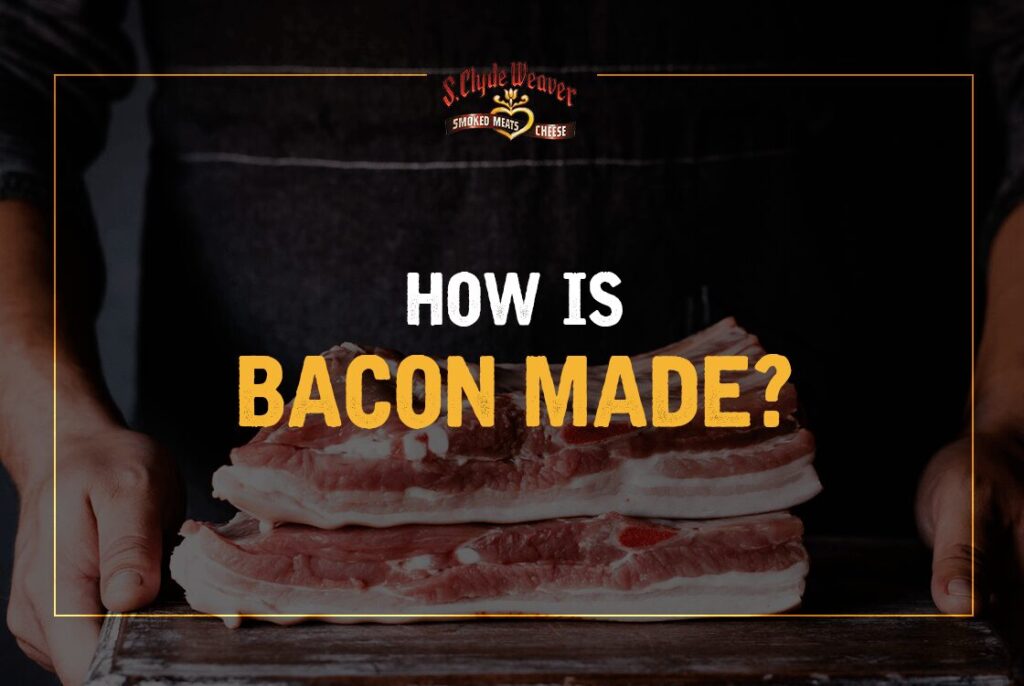
Bacon is a longtime favorite at breakfast tables and a great source of flavor for numerous dishes. With its rich, salty taste and crispy, melt-in-your-mouth texture, this versatile red meat is sure to remain popular for years to come. In fact, bacon industry revenue has grown by 2.9% in the past five years, with no signs of stopping. In 2024, roughly 275.72 million Americans ate bacon — that’s a large chunk of the U.S. population, which is currently around 341 million people.
If you’re one of the world’s many bacon lovers, you’d probably like to know how it’s made. This guide will teach you all about bacon and the processing methods that turn it into the delicious meat we all know and love. It also covers the various types of bacon you can buy in stores so you know the differences.
What Is Bacon?
Bacon refers to pork meat that has undergone a curing and smoking process. The most popular style of bacon in America is streaky bacon, but there are different types depending on the type or cut of meat and the processing method. The ingredients in bacon typically include pork, salt, sugar, sodium phosphate, sodium erythorbate and sodium nitrite.
What Cut of Pork Is Bacon?
Bacon comes from various parts of a pig, depending on what it’s called:
- American bacon comes from pork belly, the belly of the hog.
- Canadian bacon comes from pork loin, the hog’s back.
- Jowl bacon comes from pork jowl, the hog’s cheek.
- Cottage bacon comes from pork butt, the upper portion of the hog’s shoulder.
Where Does Bacon Originate From?
The earliest origins of bacon appear to be in China, where they began salting and curing pork belly. However, bacon as we know it originated in the United Kingdom, where breeding pigs followed a seasonal schedule. Piglets were born in the spring and slaughtered toward the end of the year. Since pork could be cured to create ham, bacon and more, it was an effective way of feeding families through the winter. Soon, families started breeding pigs just for bacon.
Bacon became more mainstream in the 1770s after John Harris opened the world’s first commercial bacon processing plant in Wiltshire, U.K. Harris invented the “Wiltshire cure,” a method of using brine to cure bacon. Factories worldwide followed suit, and it is now the most common bacon-curing method.
The Two Common Bacon Processing Methods
So, how does bacon go from a cut of fresh pork to delicious preserved meat? Well, it all starts with a process called curing. There are two main curing methods used today — dry and wet curing.
Dry Curing
With this method, you don’t add any liquid during the curing process. Dry curing is a time-honored tradition, so traditional types of bacon generally use this process. However, dry curing is more time-consuming, so it has become increasingly rare in the U.S. Some people still choose and pay more for dry-cured bacon thanks to its robust flavor.
The dry-curing process follows three steps:
- Preparation: The person preparing the raw bacon will rub it with salt and other seasonings, which gives it flavor and dries out the meat. Some people also add sugar to the dry rub for some sweetness.
- Curing: The meat then rests for a week or two to cure.
- Smoking: Once the bacon finishes curing, it is rinsed off, dried and placed into a smoker for further preservation and flavoring. Typically, the smoking process happens at a low heat to flavor the bacon without cooking it. The type of wood chips in the smoker can impart a specific flavor. Some common woods for smoking bacon include applewood, hickory and cherry.
Wet Curing
Most commercial facilities today cure bacon through a process called wet curing. Wet curing is more efficient and cost-effective than dry curing, but it results in bacon with more moisture and a milder flavor.
The wet-curing process is similar to dry curing, but it has some distinct differences:
- Preparation: Bacon manufacturers start by mixing water with ingredients like salt, sugar, sodium nitrite and other chemicals or seasonings to create a brine.
- Curing: To cure the bacon, manufacturers commonly inject the brine directly into the meat. Another method involves soaking the meat in brine, known as immersion curing. Soaking takes a bit longer than the injection method, also called pumping. You’ll see this brine come out of the bacon during cooking.
- Cooking: After curing, most commercially produced bacon goes through heat processing in a convection oven. This process is quicker than smoking, as it takes around six hours instead of multiple days. In the oven, manufacturers sometimes add liquid smoke to help the meat achieve the smoky flavor people have come to love.
Types of Bacon
Now that you know the basic processes for making bacon, you may be wondering what differentiates the dozens of varieties of bacon you see at the butcher, grocery store or online. Let’s look at 13 types of bacon any bacon connoisseur should know:
1. American Bacon
Starting easy, we have American bacon. Other names for this popular style of bacon are streaky or side bacon. American bacon is pork belly, which is the fattiest part of the pig. That’s why American bacon has a high fat content and those signature streaks of fat throughout. Most streaky bacon is sliced and sold in long, rectangular strips.
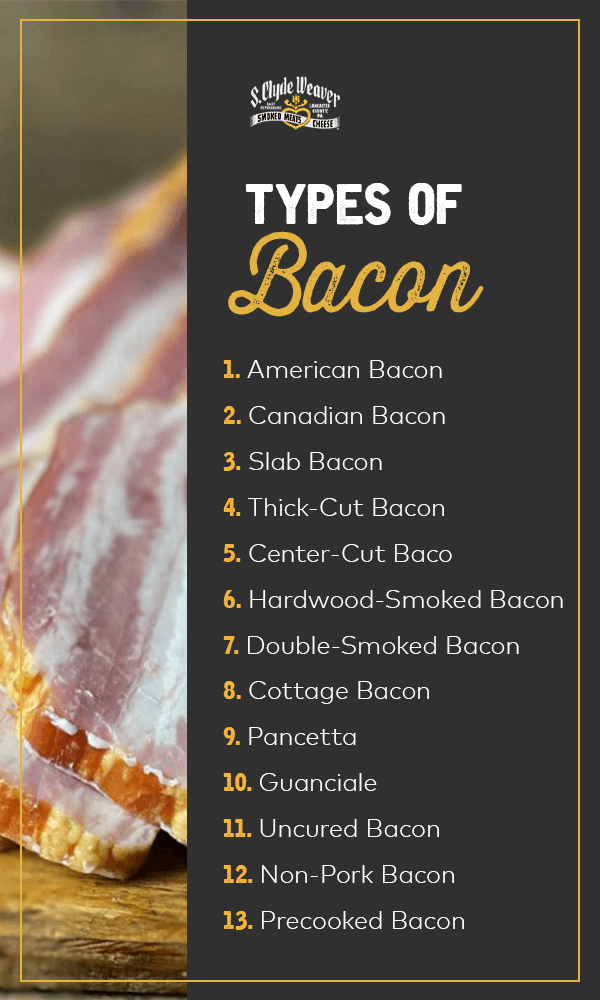
2. Canadian Bacon
Canadian bacon is an altogether different product from American bacon. In fact, it has more in common with ham than it does belly bacon. That’s because Canadian bacon comes from a pork loin, which contains far less fat than pork belly. Pork roasts also come from pork loin, but Canadian bacon differs in that it is cured and smoked. This process preserves the meat and imparts the signature flavor we associate with cured pork, including ham and bacon.
Canadian bacon slices look more like ham slices rather than bacon strips. However, it’s also a favorite choice for breakfast time and can be pan-fried, just like American bacon.
3. Slab Bacon
Most bacon you purchase comes in slices, so you can easily place them straight into a pan. If you’d prefer to slice bacon yourself, you can buy slab bacon — an unsliced section of cured pork belly. Slab bacon usually still has the rind on, which you can remove yourself before cooking. Then, you can slice it to whatever thickness your recipe calls for.
4. Thick-Cut Bacon
While there are no regulations for the standard thickness of bacon slices, most bacon is sliced into thin, 1/16-inch strips. For thicker, presliced bacon, look for a label that says “thick-cut.” Thick-cut bacon is typically about twice as thick as standard bacon slices. It makes for a more substantial breakfast and works well for dicing into dishes like pasta.
5. Center-Cut Bacon
Center-cut bacon is like streaky bacon, but it’s taken from the middle of the pork belly, close to the bone. This section is less fatty, so it’s a good option if you’re looking for leaner bacon. The lower fat content also helps when you’re making dishes — like small appetizers wrapped in bacon — that you don’t want to be soaked in fat after cooking.
6. Hardwood-Smoked Bacon
Commercial bacon usually gets its smoky flavor from liquid smoke because it’s quicker and easier to mass-produce it this way. However, you can still buy traditional hardwood-smoked bacon that has been smoked over smoldering hardwood chips. Look for labels that say “hardwood-smoked” or “naturally smoked” for genuinely smoked bacon. The label may also tell you which type of wood was used since different types can subtly affect the flavor.
7. Double-Smoked Bacon
Smoking bacon once imparts a delicious, smoky flavor, but smoking it twice can develop an even richer flavor. Most manufacturers don’t double-smoke bacon because it lengthens the process, but some artisanal companies are willing to put in the time. The result is double-smoked bacon that is sumptuously rich in a delicious, smoky flavor that brings out the best in this beloved meat.
8. Cottage Bacon
Another leaner bacon type is cottage bacon, also known as buckboard bacon. Cottage bacon comes from the upper portion of pork shoulder, called the pork butt. This pork cut is less fatty than the belly, making cottage bacon leaner than streaky bacon. It’s also much meatier and has a round or oval shape. Thanks to these qualities, cottage bacon usually retains its shape during cooking and is delicious in a sandwich.
9. Pancetta
Pancetta is the Italian name for cured pork belly. It’s similar to American-style bacon, but it is only cured and not smoked. This difference gives pancetta a deeper, natural flavor with no smoky accent. Like bacon, it adds fantastic flavor to a variety of dishes. You can buy pancetta sliced extremely thin or diced.
10. Guanciale
Another Italian bacon product is guanciale. Guanciale is made from pork cheek, known as the jowl. For this reason, it is sometimes classified as jowl bacon. The cheek has a lot of fat, making guanciale much fattier than other bacon types. Similar to pancetta, guanciale is cured and not smoked. However, it is cured for longer to develop its strong flavor. Many people use guanciale in spaghetti carbonara as it adds flavor and thickens the sauce.
11. Uncured Bacon
All bacon is processed through curing before consumption to preserve the meat and give it its distinct flavor. However, you may find some bacon in stores called uncured bacon. If all bacon is cured, what does this label mean?
Uncured bacon has still been cured, just in a slightly different way. Instead of using synthetic nitrates for curing, manufacturers use natural nitrates from celery, beets or other produce. Interestingly, there is no difference between artificial and natural nitrates. It’s the same molecule, and your body reacts to them in the same way.
12. Non-Pork Bacon
While traditional bacon is made from pork, you may have seen or tried other types of “bacon” that come from different animals. The most common non-pork bacon is turkey bacon. Turkey bacon is a healthier alternative to pork bacon because it has fewer calories and less fat. It’s processed the same way as pork bacon and shaped to look like bacon strips. You can also buy beef or duck bacon and even bacon made with no meat, called vegan bacon. While healthier, they lack the flavor and texture of pork bacon.
13. Precooked Bacon
If you don’t like the time or mess involved in cooking bacon at home, you can pay extra at the grocery store for precooked bacon. This bacon is cooked at the production plant before being packaged. While convenient, precooked bacon doesn’t taste the same as freshly cooked bacon. Plus, you miss out on collecting bacon grease that works well for frying and adding flavor to food.
Enjoy Bacon That Is a Cut Above With S. Clyde Weaver
If you’re used to the water-injected variety of bacon you find at the store, you’ll be amazed by S. Clyde Weaver’s bacon. We use traditional dry curing and smoking methods to produce delicious bacon you can enjoy with breakfast, lunch or dinner. With over a century in the business, we’ve had plenty of time to perfect our recipes and methods so we can bring you the very best.
Browse and order our bacon products online today to taste the difference yourself. You may also want to try our other smoked meat and cheese products.
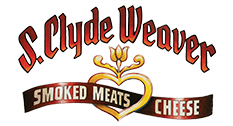



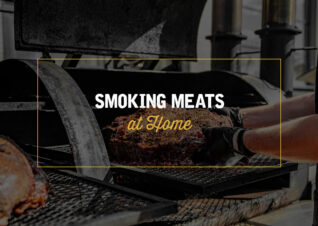
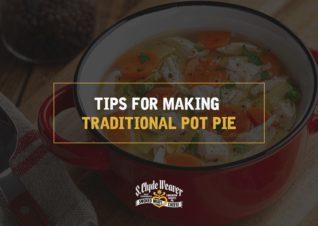
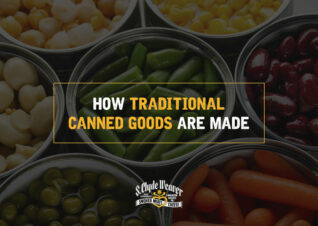

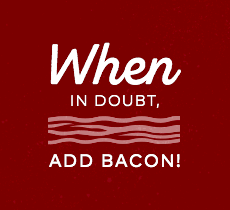
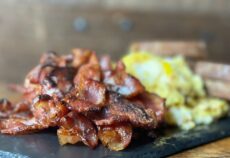
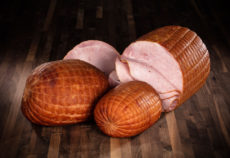
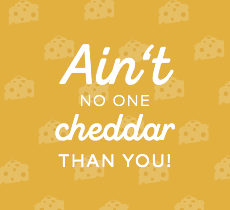
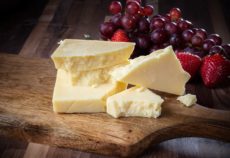
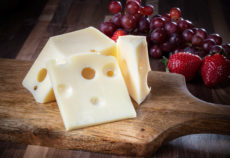
i can eat celery and beets without a problem but nitrites in anything gives me esophageal reflux. i cannot believe they are metabolised the same. i noticed it five years ago at age 68. it seems to bother half the people my age.
I would really appreciate it if you could send me some coupons fir your wonderful,bacon
I would love to buy some of your bacon..
I just picked up a 1/4 pig we had butchered. I asked for a few pork chops, ground sausage and bacon. I received sliced ham, pot chops, ground sausage, and a small 6 packs of bacon. Why? Is it expensive? Hard to make? Is it appropriate to ask for a correction?
How can bacon be cured with sugar and yet the labels all say 0% sugar or “0% added sugars?” I’m on a no-sugar diet, but I would like to eat bacon. Thank you.
Good to know all the differences. And the nitrates are interesting in incited bacon. So basically don’t worry about it.
How would I make a gammon joint at Home?
Hi Jeremy!
We actually start smoking our bacon between 160-180° before finishing it up closer to 200°. We smoke our bacon at a lower temperature in order to preserve the juices and fat. Thanks for asking!
What temperature do you smoke your bacon at if it is a lower temp smoke? Is it the normal 225 for everything else or do you do like a 200° temp?